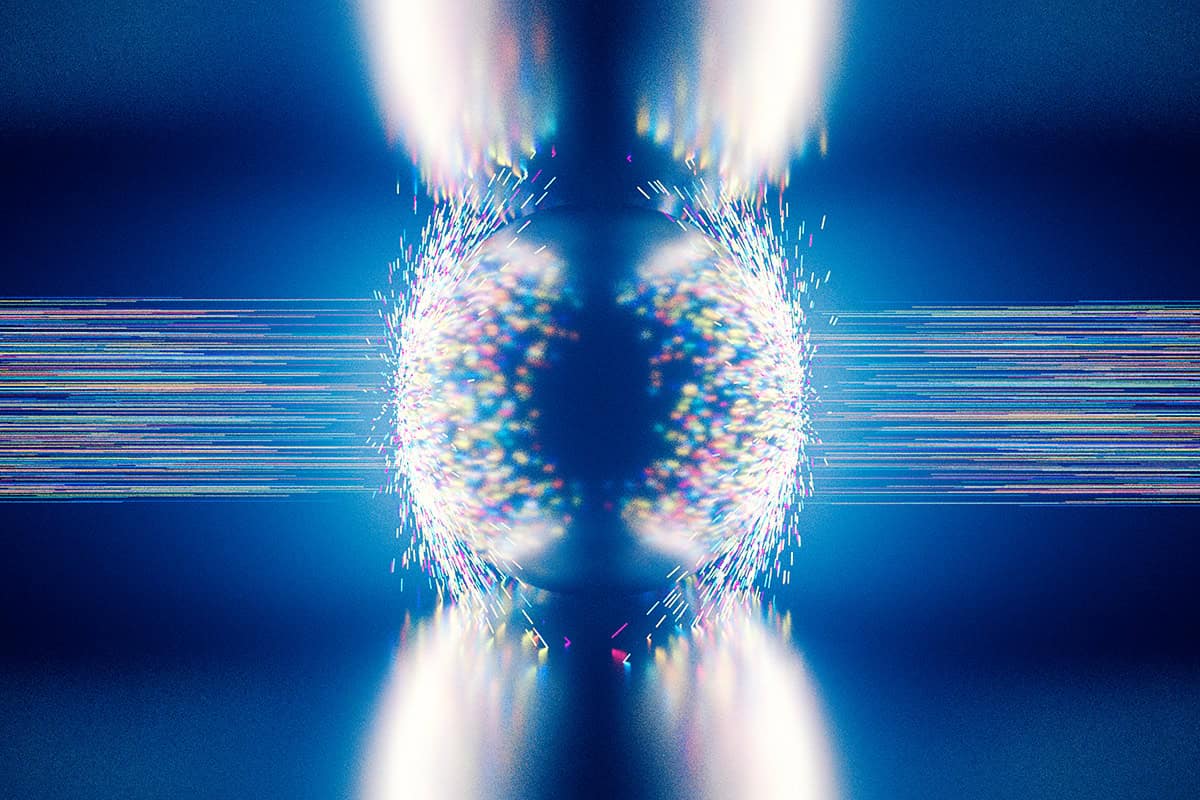Science
CMS Collaboration Achieves Breakthrough in Tau Lepton Physics

In a significant advancement in particle physics, the CMS Collaboration has reported the first observation of tau lepton pair production through photon-photon fusion in proton collisions. This milestone opens new pathways for studying tau leptons, which are notoriously difficult to analyze due to their unique properties and rapid decay.
Tau leptons belong to the lepton family, alongside electrons and muons, but they exhibit notable differences. They possess a half-integer spin and are heavier than their counterparts, leading to extremely brief lifetimes. This rapid decay limits direct observation and complicates detailed analysis. The theoretical foundation for understanding these interactions is established in the Standard Model of particle physics, which outlines the fundamental particles and forces in nature.
According to quantum electrodynamics (QED), a key component of the Standard Model, protons in high-energy conditions can emit photons. These photons can then collide and combine to create a pair of tau leptons, represented by the equation: γ γ → ττ. While calculations have provided insights into the production probabilities of tau leptons, their actual observation in proton collisions has remained elusive.
The recent breakthrough at the Large Hadron Collider (LHC) in CERN marks the first successful measurement of tau lepton pair production in proton-proton collisions. Prior to this achievement, tau pair production had only been observed in lead-ion collisions, where the photons were produced by the strong electromagnetic fields of heavy nuclei. These lead-ion environments are complex and filled with numerous particles, making detection challenging. In contrast, proton-proton collisions offer a cleaner backdrop but occur less frequently, posing a greater technical challenge for researchers.
A notable technical achievement in this research was the ability to differentiate between QED photon collisions and those arising from quantum chromodynamics (QCD). The researchers successfully identified tau particles generated without any accompanying tracks from nearby particles, utilizing the high vertex resolution of their pixel detector. This precision allows for cleaner data and more reliable conclusions.
To validate their methodology, the team conducted thorough investigations into muon pair production, applying corrections to the tau lepton processes based on their findings. The successful demonstration of tau pair production in proton-proton collisions not only confirms theoretical predictions but also establishes a new avenue for probing tau leptons in high-energy physics environments.
This advancement enhances the understanding of lepton interactions and provides a valuable tool for testing the Standard Model with increased accuracy. The observation of the process γγ → ττ in proton-proton collisions contributes significantly to the field and sets the stage for future explorations into the fundamental aspects of particle physics.
According to the CMS Collaboration, this work will continue to refine the understanding of the anomalous electromagnetic moments of the tau lepton, potentially shaping the future of particle physics research.
-

 Entertainment2 weeks ago
Entertainment2 weeks agoAndrew Pierce Confirms Departure from ITV’s Good Morning Britain
-

 Health4 months ago
Health4 months agoNeurologist Warns Excessive Use of Supplements Can Harm Brain
-

 Health4 months ago
Health4 months agoFiona Phillips’ Husband Shares Heartfelt Update on Her Alzheimer’s Journey
-

 Science2 months ago
Science2 months agoBrian Cox Addresses Claims of Alien Probe in 3I/ATLAS Discovery
-

 Science2 months ago
Science2 months agoNASA Investigates Unusual Comet 3I/ATLAS; New Findings Emerge
-

 Entertainment1 week ago
Entertainment1 week agoGogglebox Star Helena Worthington Announces Break After Loss
-

 Entertainment1 month ago
Entertainment1 month agoTess Daly Honoured with MBE, Announces Departure from Strictly
-

 Science2 months ago
Science2 months agoScientists Examine 3I/ATLAS: Alien Artifact or Cosmic Oddity?
-

 Entertainment3 months ago
Entertainment3 months agoLewis Cope Addresses Accusations of Dance Training Advantage
-

 Entertainment5 months ago
Entertainment5 months agoKerry Katona Discusses Future Baby Plans and Brian McFadden’s Wedding
-

 Science2 months ago
Science2 months agoNASA Investigates Speedy Object 3I/ATLAS, Sparking Speculation
-

 Entertainment5 months ago
Entertainment5 months agoEmmerdale Faces Tension as Dylan and April’s Lives Hang in the Balance









